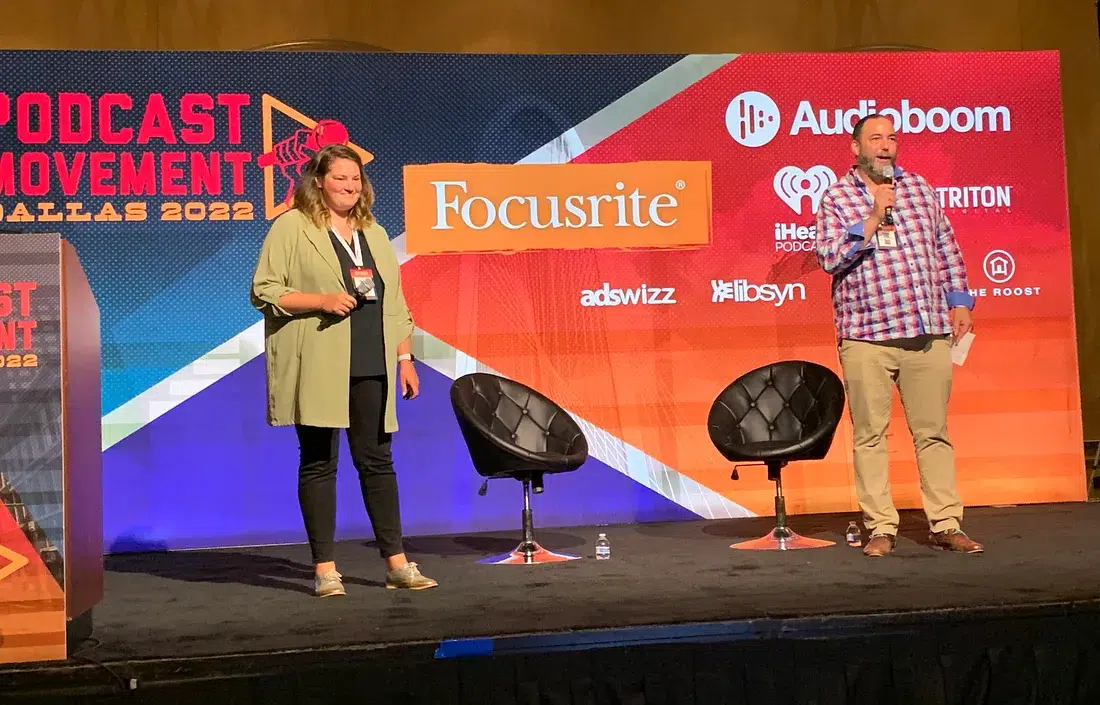Dispatches from Dallas: Day Two

From “Fact Vs. Fiction: How Do You Boost Discoverability?”
This session covered basics on how to get your podcast in front of the people you most want to have as an audience. All of the panelists said quality content is table stakes: no point asking people to spend their time with you if the show isn’t good.
Top Tip: James Cridland from PodNews wanted more podcasters to think of one simple and free tool for getting noticed, saying he was surprised how few press releases he gets about new podcasts if they aren’t from established creators or networks. His advice? Send a press release to every podcasting newsletter you can think of, with a clear articulation of your podcast’s raison d’être, and be sure to include a picture, not just your cover art. Human faces build instant connection and a sense of personality.
Top Quote: “The show may be 10 years old but the content is fresh,” was panelist Ray Chao’s advice was for podcasters who have shows that are already up and running. He said too many shows concentrate on promoting just the launch of their podcasts, which means they may lose out on the chance to keep winning over new listeners. He says even the most successful and established podcasts can benefit from pulling magic moments from their newest shows and pushing them out on social to reach different audiences on different platforms.
From “The Sound of Story”
This session featured the co-hosts and creators of NPR’s podcast Throughline talking about how sound and story support each other.
Top Tip: Rund Abdelfatah urged podcasters to think about sound ever step of the way, from the structure of the episode to the writing, because if it’s an afterthought then it will sound like an add on instead of an organic whole. Her advice for writing? Always have the sound sneak in before the words that related to it, so it starts to evoke the mood. As she put it, “You want to hear the sound before you hear the words.”
Top Quote: “Every podcast you make is like a song.” Panelist Ramtin Arablouei says he thinks about his episodes like a composition. While he often scores the episodes himself, he also thinks about voice, silence, and actuality as part of a shows musicality. You can even think about host banter as your rhythm section.
From “Binaural Audio: Why Now Is The Time to Embrace 3D-Audio For Your Narrative Podcast” session
This session was from my fabulous colleagues Robyn Edgar and Shawn Cole, and covered the pros and cons of using spacial audio technology to record, produce and mix your show.
Top Tip: Sound Designer Robyn Edgar urged podcasters to think about the content and format of the show, and not just to just binaural recordings for the sake of using a trendy technology. 3D-audio is really good at some things, like immersing your listener in a scene so they feel like they are part of the story, but that could actually be a bit intense for some content. And nobody really needs a binaural chat show, really.
Top Quote: “Binaural audio is the most accessible way to start using 3D audio in your podcasts.” Our Head of Audio Production Shawn Cole has been working in audio his whole career, so when he says something stood out for him, it makes an impression. He first experimented with the technology in the late 90’s, borrowing a “dummy head” mic from a local university to record a gospel choir. Now the recording tech is much more affordable and portable, and he says you can even find some of the editing plug ins you need for free. You can read more in his blog on the topic as well.
Sign up for the Pacific Content Newsletter: audio strategy, analysis, and insight in your inbox.
